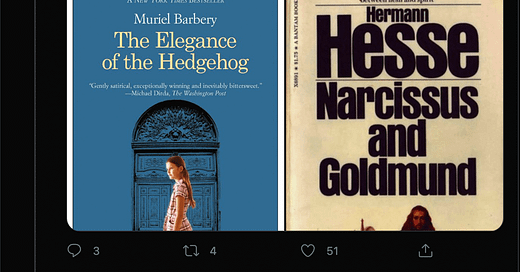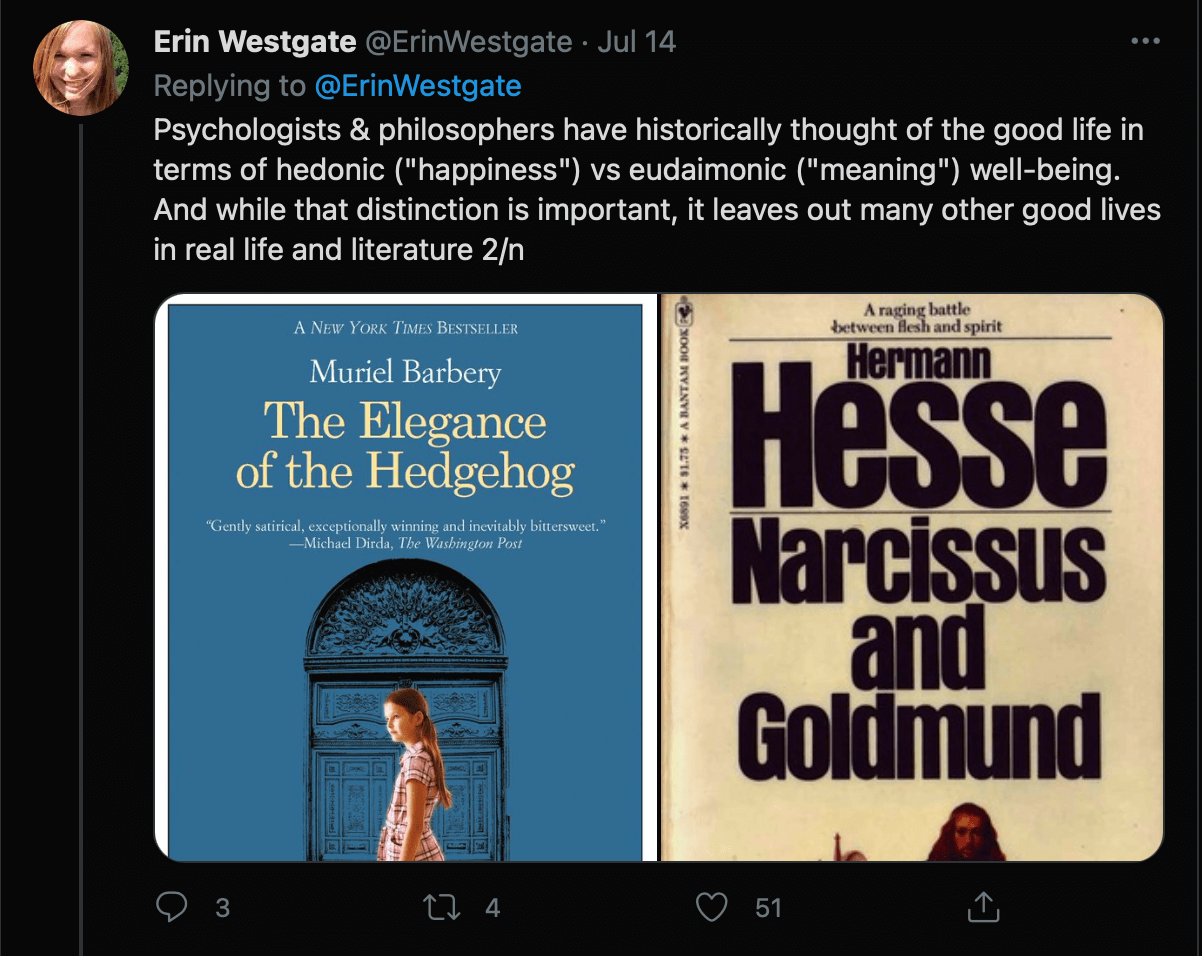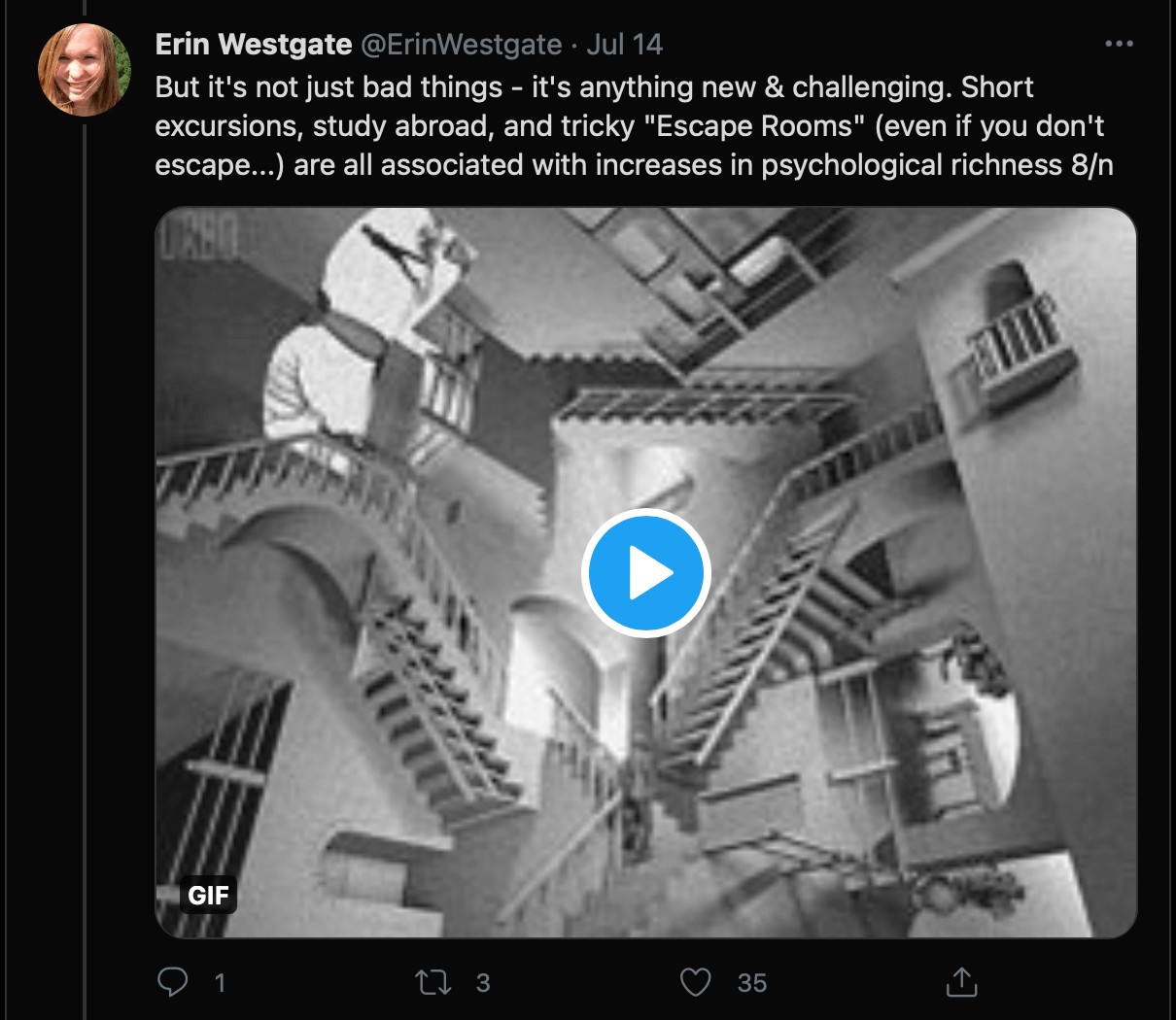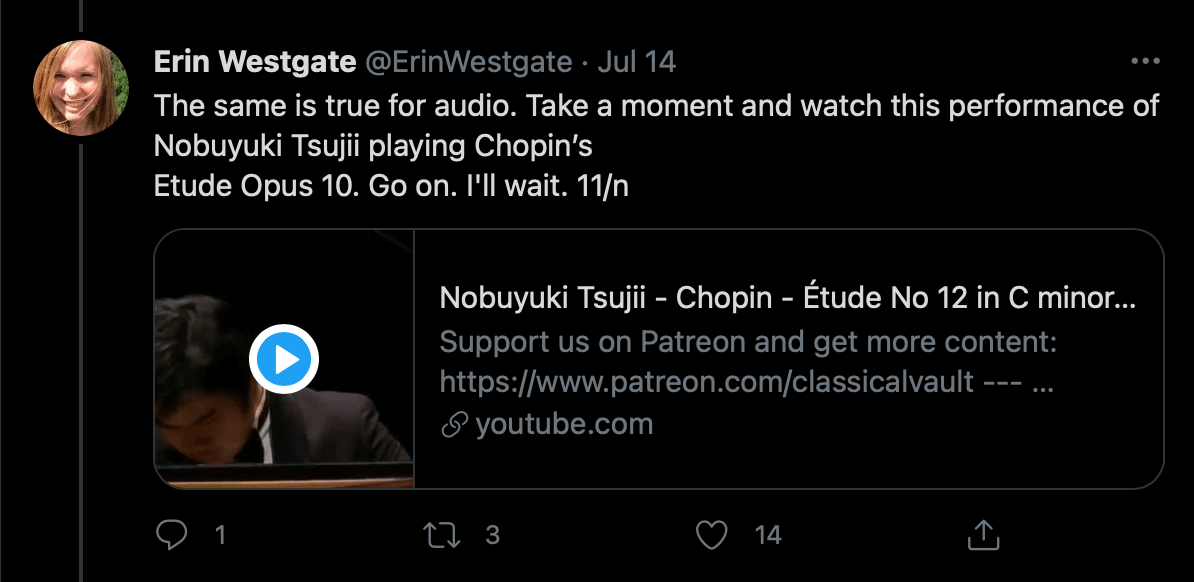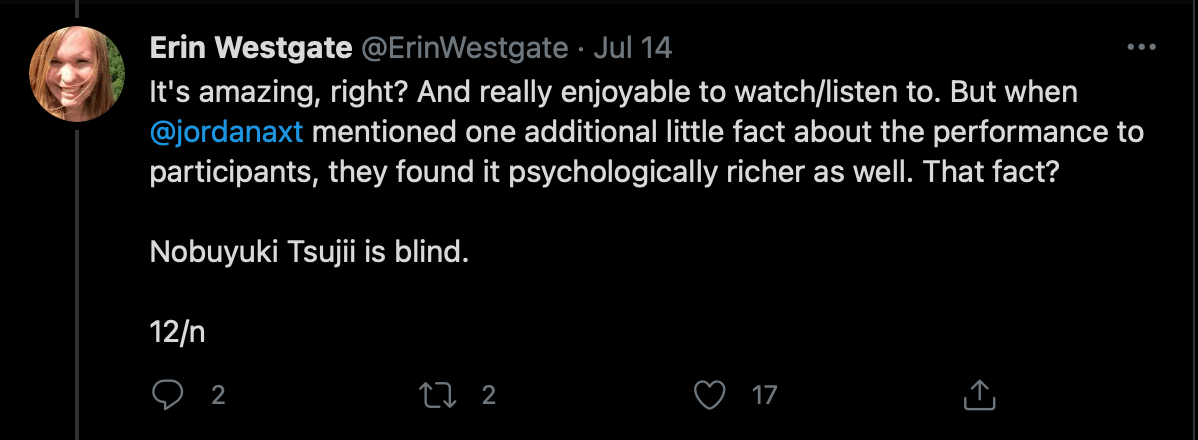Tell All the Stories of Your Science
You’re probably already familiar with how most researchers summarize their new research on Twitter — they basically Twitterize their papers, with screenshots of the abstract, key figures and a more or less accessible summary of the methods, findings, and discussion. Here’s a representative example. I don’t mean to pick on it — not thrilling, but it performs the basic task: We understand the research gap the authors were trying to fill and how they filled it.
But we (your audiences) often need to know more than just findings in order to incorporate your findings into our lives. We need to understand:
Why you did the research — the larger social questions and narratives your investigation springs from and addresses;
Whether your research introduces a new idea or paradigm that might change the way we see things (and why);
The story of your research itself— how it progressed, and even what it felt like to be part of it; and
The actions you recommend we take as a result of the findings and/or new idea.
Your science has multiple stories. Just summarizing your research findings doesn’t tell those stories. Which means you’re not allowing your audience to access the multiple relevances your research might have for them.
But Twitter threading is quite supple as a narrative vehicle; it furnishes wonderful opportunities for you to start to tell these multiple stories.
Example: Look at how social psychologist Erin Westgate’s thread promoted a new paper she co-authored on why a “psychologically rich life” (i.e., challenging. dramatic and highly varied) is a worthy alternative to the “happy” or a “meaningful” life. (Very interesting paper: among other things, I learned there is a genre of research called “obituary studies.”)
Westgate has a keen sense of how to use visual elements to drive a narrative. For instance, this counterexample early in the thread with two book covers, meant to convince us that the “happiness” vs. “meaning” debate has left out other options (i.e., there’s a need for the new big idea driving this research):
To help us buy into the idea that the psychologically rich life exists, she uses media obituary headlines and images to illustrate the kind of lives that code psychologically richer to their participants and those around them:
And Westgate isn’t afraid to have fun with her narrative — to use GIFs or videos, visual metaphors to make her concepts stickier:
She even introduces a mini-experiment for the thread reader to participate in that makes psychological richness real to them — first asking them to watch a video of a Western classical piano recital:
And then doing a big reveal about the performance that opens a door to its deeper richness:
Takeaway: Your expertise becomes multi-dimensional and substantially richer for the public when you move beyond summarizing your findings to:
Use threads to set the context for why you’ve done a paper, and the larger questions your investigation nests into — the social narrative.
Conceive of your thread as a narrative itself — one that has to tell the story of the investigation in a compelling, memorable way.
Bridge from that narrative narrative to a strong recommendation for action.
Your science has many stories and touches many narratives. Start telling more of them so more of us can relate to what you’ve learned.


